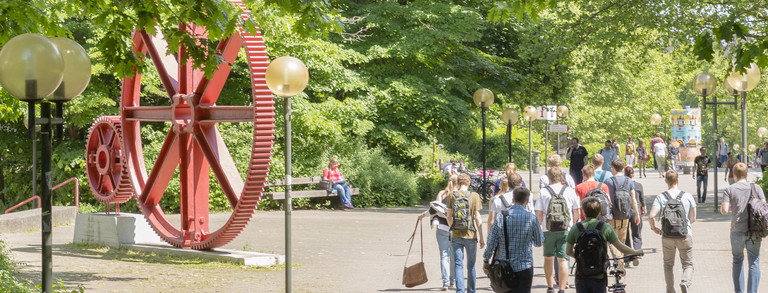Mechanics II (MB)
Moodle info
The course contents as well as all further information about the course "Mechanics II" in summer semester 2025 can be accessed via the "Moodle Course".

You are here:
The course contents as well as all further information about the course "Mechanics II" in summer semester 2025 can be accessed via the "Moodle Course".
The lecture covers the fundamentals and engineering applications of the statics of elastically deformable bodies (elastostatics). At the beginning of the module, basic quantities of elastostatics, such as stress, strain, and constitutive law, are introduced using the tension/compression bar. These terms are then defined for the general three-dimensional case, with the constitutive law always limited to isotropic linear elasticity. Equivalent stresses for different strength hypotheses are treated as an elementary part of ultimate limit state design. The general building blocks of elastostatics - i.e., stresses, strains, and constitutive law - are then combined to derive the differential equations for selected structures. In particular, the bending line of the shear-rigid beam (Bernoulli theory) is derived and torsion problems are treated. Next, the concepts of work and energy for elastic deformable bodies are introduced and the theorems of Castigliano and Menabrea and the principle of virtual forces are treated. Finally, buckling problems are discussed. The module is the basis for numerous other modules in the compulsory and elective areas.
Cycle: Summer semester
The module consists of a weekly lecture and a weekly tutorial. The offer is supplemented by weekly "exam preparation courses", in which you are supposed to work out independent approaches and solve tasks independently, whereby assistance is always given on our part. Details on specific times and rooms, as well as all other information, can be found in the Moodle course.
The examination takes place in the form of a written exam. An overview of the current exam dates can be found here. All further information regarding time, processing time, permitted aids, lecture hall distribution and more can be found in the Moodle course.
